From the astonishing metamorphosis of butterflies to the mysterious world of moths and the intriguing stinging caterpillars, Michigan‘s forests and meadows are teeming with these fascinating creatures, each with its own unique traits and survival strategies.
In the lush woodlands and open fields of Michigan, caterpillars play an essential role in the ecosystem. Not only are they important herbivores that shape plant populations, but they’re also a vital part of the food web for various predators.
Join us as we delve into the lives of these ten captivating caterpillars, gaining insight into their size, diets, habitats, and other enthralling facts that make them the unsung heroes of Michigan’s vibrant biodiversity. From adorable to awe-inspiring, these caterpillars are sure to ignite a newfound appreciation for the wonders of the natural world that lie just beyond our doorstep.
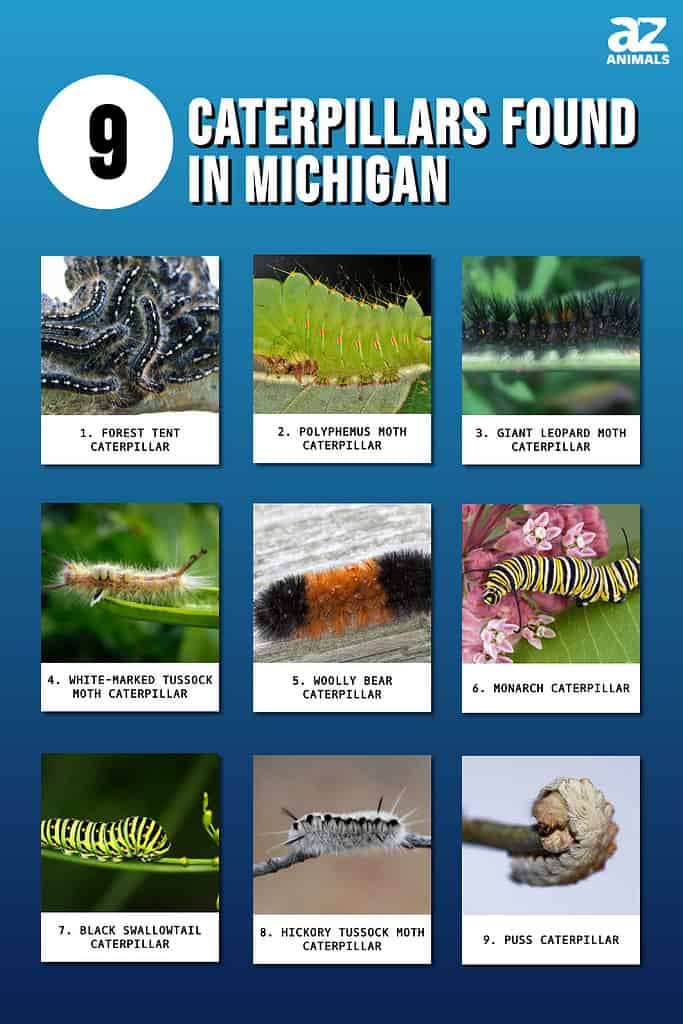
Moth Caterpillars
1. Forest Tent Caterpillar
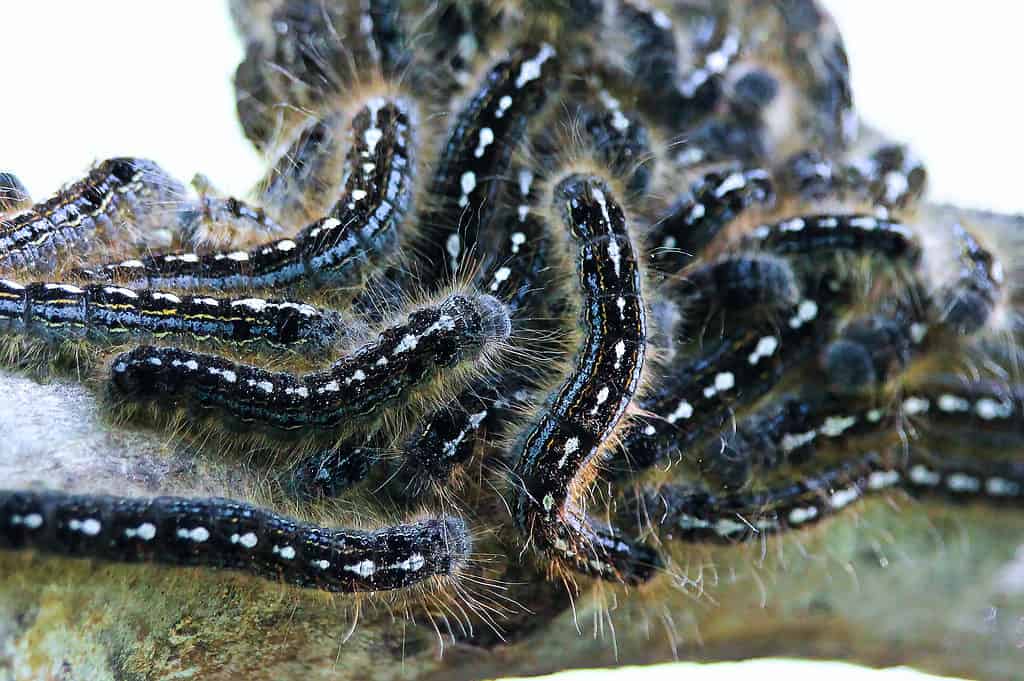
Forest tent caterpillars are commonly identified by the white keyhole-shaped markings on their back.
©Amelia Martin/Shutterstock.com
The forest tent caterpillar is a common moth caterpillar in Michigan. It measures around 2 inches long and has a black and blue body with white keyhole-shaped markings on its back. They are defoliators, feeding on the leaves of various deciduous trees like oak, aspen, and maple. These caterpillars build silk tents in the branches of trees, which they use for protection. While their feeding behavior can lead to temporary damage to trees, the trees typically recover.
2. Polyphemus Moth Caterpillar
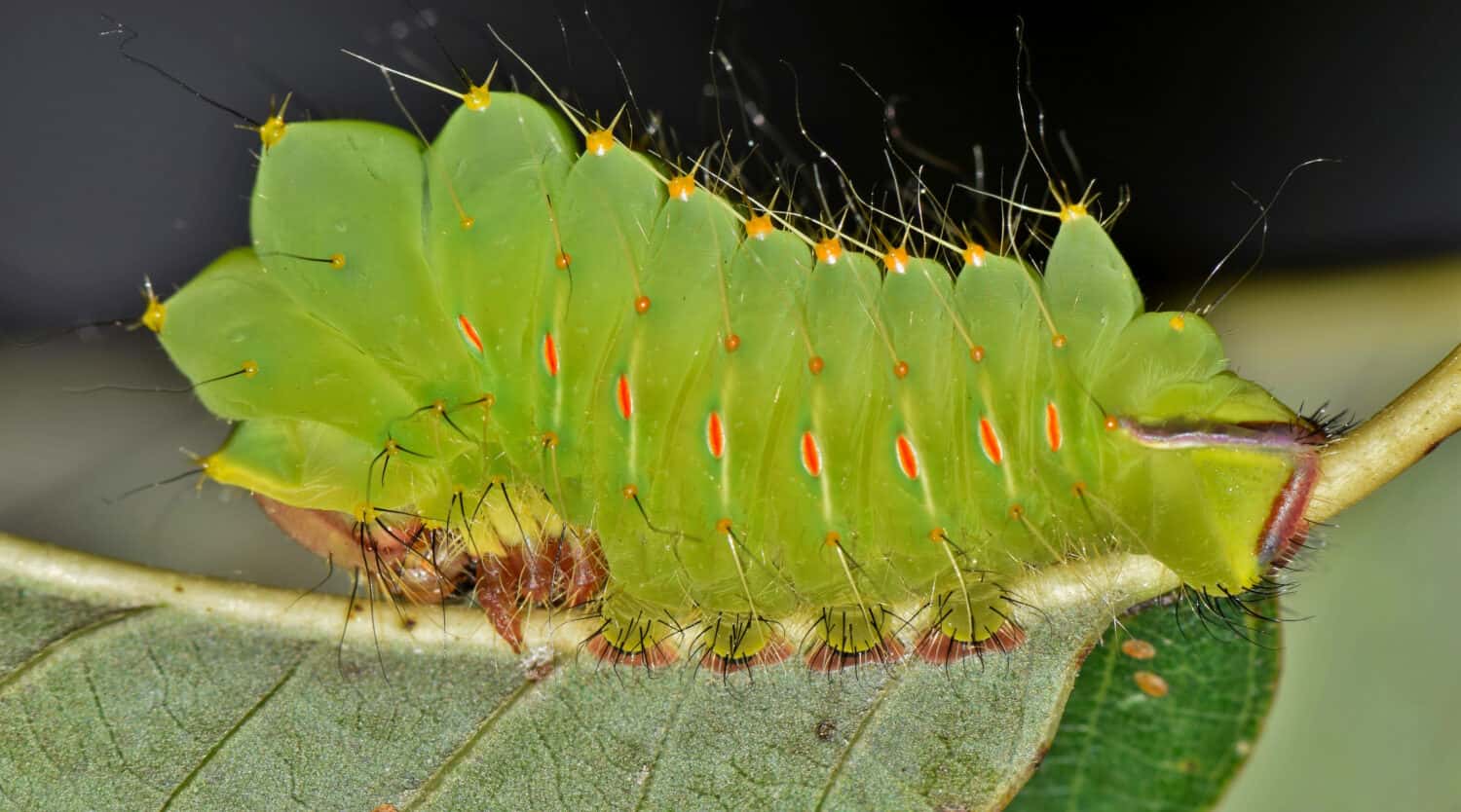
Polyphemus moth caterpillars typically molt five times during their life cycle.
©Brett Hondow/Shutterstock.com
The polyphemus moth caterpillar is easily recognizable due to its large size (around 4 inches) and distinct green color with yellow and red spots. They feed on a variety of deciduous trees like oak, maple, and willow. After maturing, the adult moths emerge, which are known for their impressive wingspan and eye-shaped markings, giving them the name “Polyphemus.”
3. Giant Leopard Moth Caterpillar
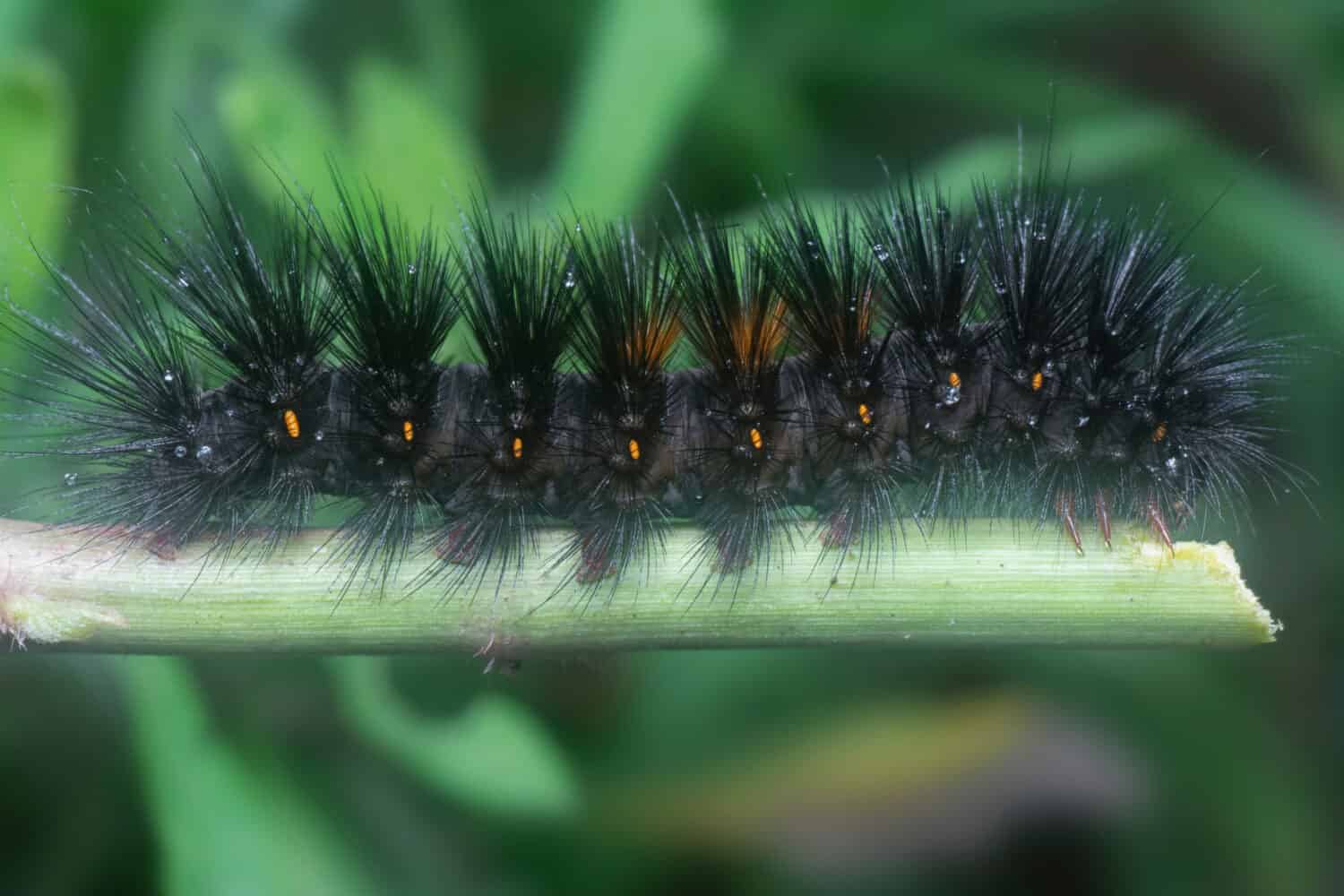
Despite their appearance, giant
leopard
moth caterpillars are harmless.
©Young Swee Ming/Shutterstock.com
The giant leopard moth caterpillar is known for its striking appearance, with black spots and vibrant red and blue bands on its body. It feeds on a wide range of plants, including dandelion, sunflower, and violet. Although it has spines, they are not venomous and are generally harmless to humans.
4. White-Marked Tussock Moth Caterpillar
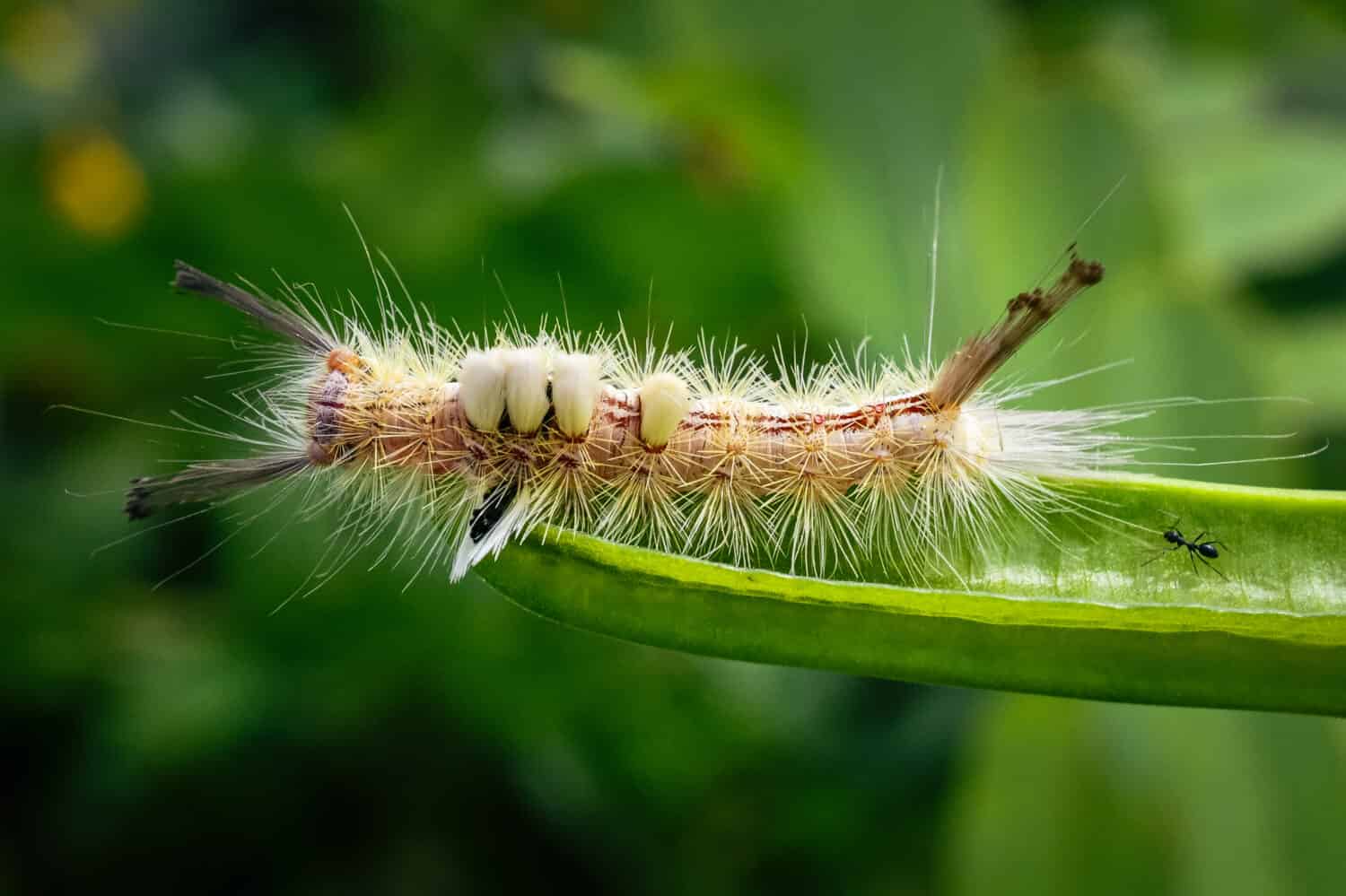
These caterpillars typically reside on coniferous and deciduous trees.
©Satyashutter/Shutterstock.com
This caterpillar has a distinctive appearance with white and black tufts of hair. It feeds on various trees and plants, such as oak, maple, and apple. While its hairs can cause mild skin irritation in some people, it’s generally not dangerous.
5. Woolly Bear Caterpillar
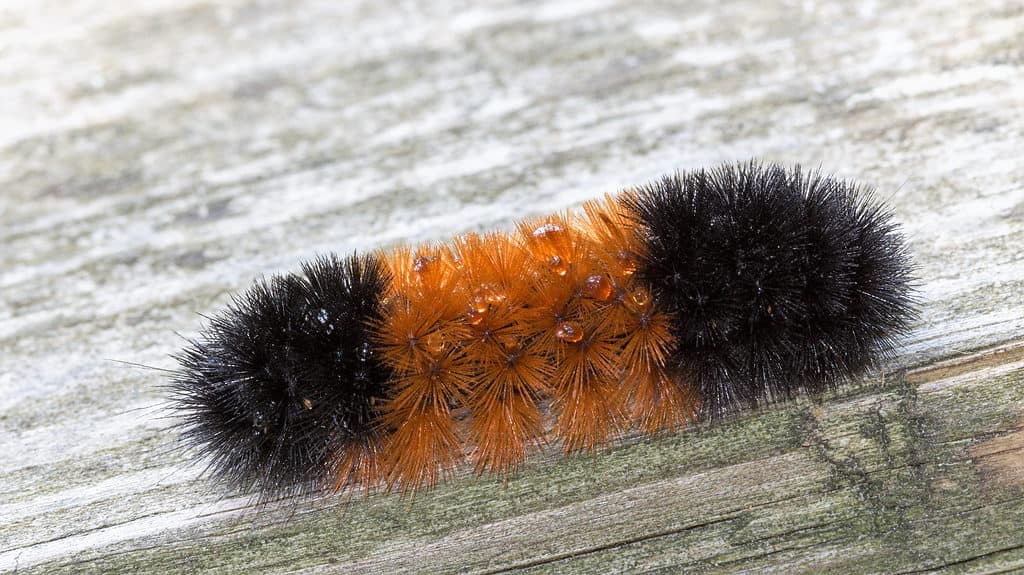
The woolly bear caterpillar’s life span usually lasts about 1 to 2 weeks.
©Kimberly Boyles/Shutterstock.com
The woolly bear caterpillar is famous for its winter weather prediction folklore. It has a black and orange banded appearance and is covered in fine hairs. According to the legend, the wider the orange band on the caterpillar, the milder the winter will be. These caterpillars feed on various herbaceous plants.
Butterfly Caterpillars
1. Monarch Caterpillar
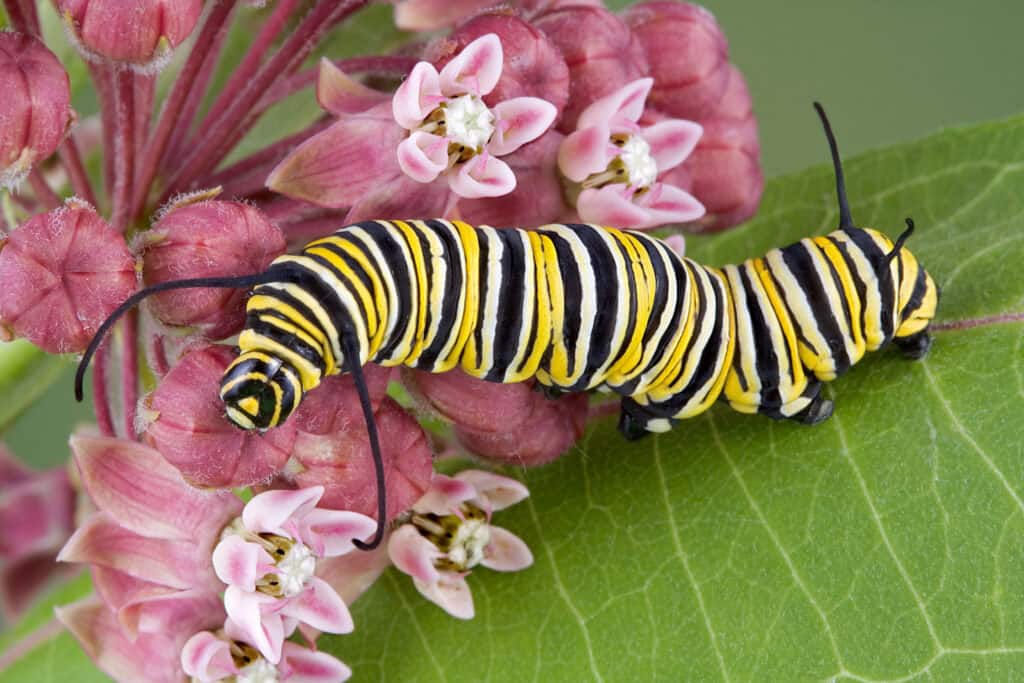
Milkweed flowers are popular food for caterpillars.
©Cathy Keifer/Shutterstock.com
The monarch caterpillar is one of the most famous caterpillars in Michigan. It has black, yellow, and white stripes, and its size can reach about 2 inches. The caterpillars exclusively feed on milkweed plants, as they store toxins from the milkweed in their bodies, making them unpalatable to predators. The Monarch Butterfly is known for its remarkable migration journey to Mexico during the winter.
2. Black Swallowtail Caterpillar
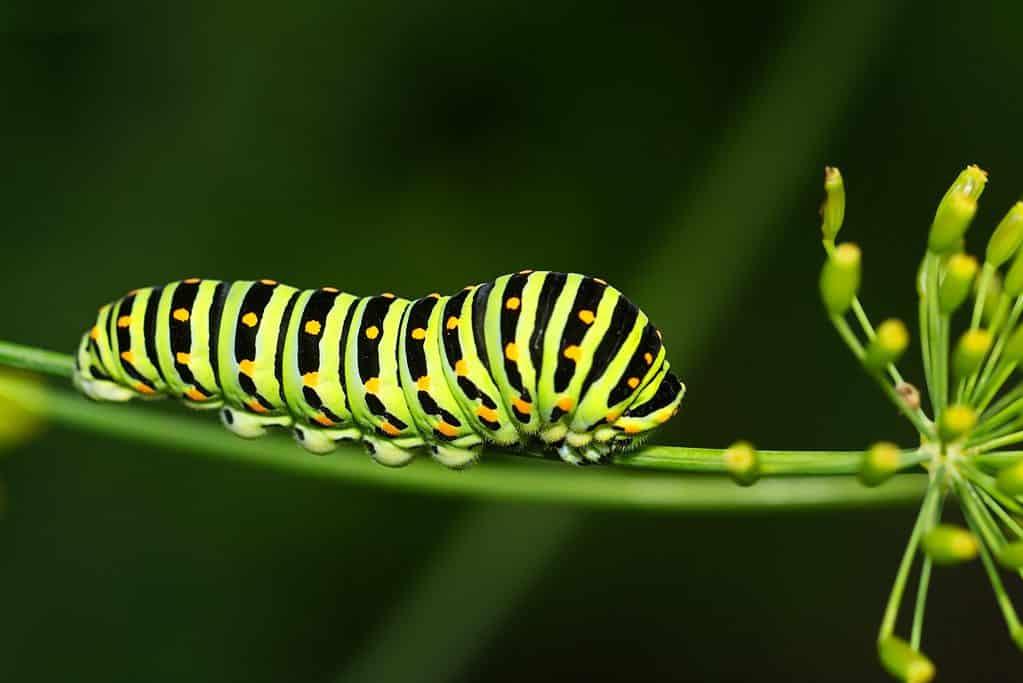
These caterpillars are known for their striking appearance, which acts as a warning to predators.
©Graphicato/Shutterstock.com
The black swallowtail caterpillar is about 2 inches long and has striking black and green stripes. It feeds on plants from the Apiaceae family, including parsley, dill, and fennel. This caterpillar also has a unique defense mechanism! When threatened, it retracts its head and emits a foul-smelling, orange, Y-shaped organ called the osmeterium to deter predators.
Stinging Caterpillars
1. Hickory Tussock Moth Caterpillar
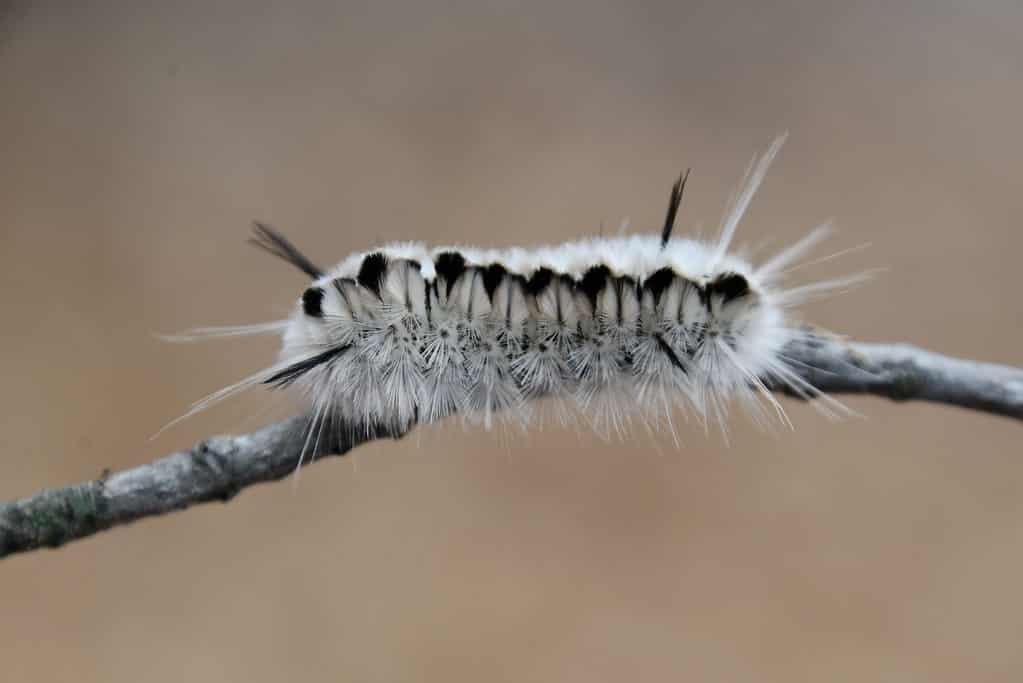
These caterpillars have hairs that can cause skin irritation if touched.
©Stephanie Gelman/Shutterstock.com
This caterpillar stands out with its tufts of long, white hairs and black spines. These hairs can cause skin irritation if touched. The caterpillar feeds on the leaves of hickory, walnut, and other hardwood trees. It goes through several molts before transforming into a moth with striking white and black wings.
2. Puss Caterpillar
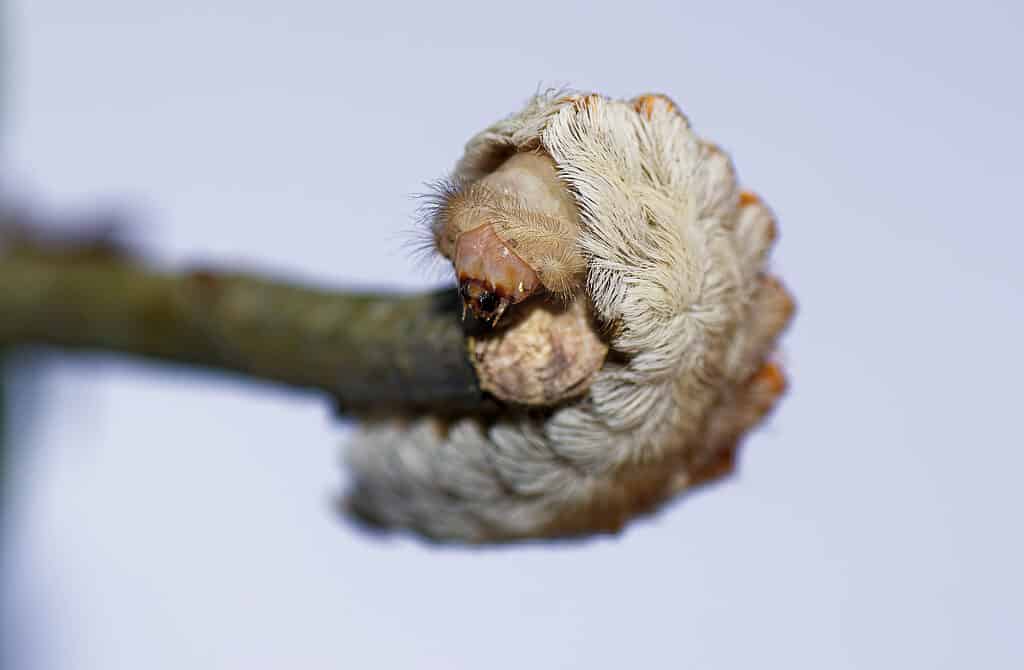
These caterpillars can cause severe allergic reactions if touched.
©Chase D’animulls/Shutterstock.com
Also known as the “asp” caterpillar, the puss caterpillar is among the most venomous caterpillars in the United States. It has a dense coat of fine, fur-like hairs that conceal venomous spines. When touched, the spines can cause severe pain, rash, and other allergic reactions. The caterpillar feeds on various plants and trees.
Summary of 10 Caterpillars Found in Michigan
| Number | Caterpillar | Type of Caterpillar |
|---|---|---|
| 1 | Forest Tent Caterpillar | Moth |
| 2 | Polyphemus Moth Caterpillar | Moth |
| 3 | Giant Leopard Caterpillar | Moth |
| 4 | White-Marked Tussock Moth Caterpillar | Moth |
| 5 | Woolly Bear Caterpillar | Moth |
| 6 | Monarch Caterpillar | Butterfly |
| 7 | Black Swallowtail Caterpillar | Butterfly |
| 8 | Hickory Tussock Moth Caterpillar | Stinging |
| 9 | Puss Caterpillar | Stinging |
The photo featured at the top of this post is © K Hanley CHDPhoto/Shutterstock.com
Thank you for reading! Have some feedback for us? Contact the AZ Animals editorial team.







